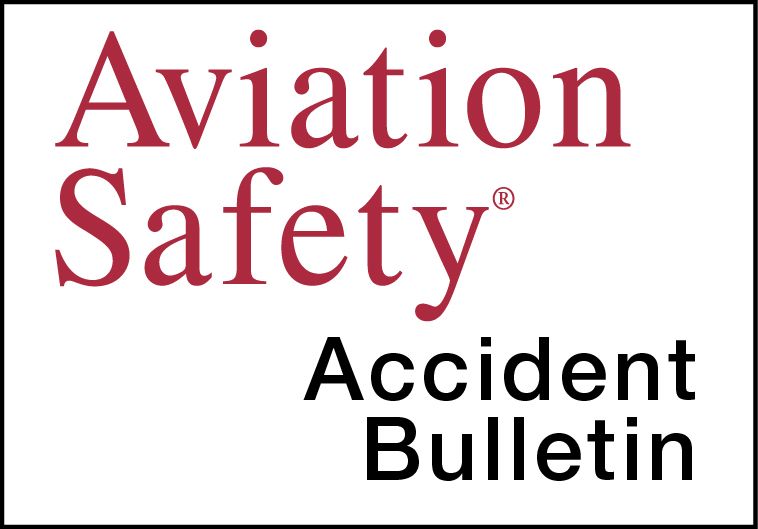AVweb’s General Aviation Accident Bulletin is taken from the pages of our sister publication, Aviation Safety magazine. All the reports listed here are preliminary and include only initial factual findings about crashes. You can learn more about the final probable cause on the NTSB’s website at www.ntsb.gov. Final reports appear about a year after the accident, although some take longer. Find out more about Aviation Safety at www.aviationsafetymagazine.com.
November 1, 2019, Kalamazoo, Mich.
Socata TB-30 Epsilon
At about 1635 Eastern time, the airplane experienced a partial loss of engine power after takeoff. The airplane sustained substantial damage, and the pilot received serious injuries during the subsequent off-airport landing. Visual conditions prevailed.
According to the pilot, the airplane produced full power during the takeoff. Shortly after the pilot retracted the landing gear, the engine began losing power to the point that altitude could no longer be maintained. The pilot declared an emergency with ATC and avoided a residential area by turning left in an attempt to return to the airport. The pilot realized he could not reach the runway and landed on the grass adjacent to it wings-level with the landing gear retracted.
November 1, 2019, Stuart, Fla.
Grumman OV-1D Mohawk
The airline transport pilot was fatally injured and the airplane destroyed at about 1310 Eastern time during an air show demonstration flight. Visual conditions prevailed.
According to an observer, the pilot did not intend to perform aerobatic maneuvers during the flight, but wanted to “visually locate the acrobatic box” for the planned show. His intent was to make two low passes and a full-stop landing. Security video depicted the airplane in about a 60-degree nose-down and rightwing-low attitude when it impacted the engineered materials arresting system (EMAS) at the approach end of Runway 30.
November 3, 2019, Doral, Fla.
Beechcraft 76 Duchess
At about 2150 Eastern time, the airplane was substantially damaged during a forced landing to a road. The commercial pilot and pilot-rated passenger were not injured. Night visual conditions prevailed; an IFR flight plan was in effect.
Before departing Hilton Head, S.C., for Miami, Fla., the pilot reportedly added 20 gallons of fuel to the 55-60 gallons already aboard, which did not fill the tanks. About 20 miles from the destination airport, at 2000 feet MSL, the right engine “failed without warning” and was feathered. While approaching a nearby airport at about 500 feet MSL, the left engine also failed. Shortly before touching down on the road, the airplane’s left wing struck a truck.
Examination of the airplane within an hour of the accident revealed ½-cup of fuel remained in the left tank and a full cup was in the right one. There was no fuel leaking from either tank and no fuel stains were observed on the ground under the airplane.
November 4, 2019, New Bedford, Mass.
Cessna 150
The airplane was destroyed at 1532 Eastern time when it impacted a cemetery. The solo private pilot aboard was fatally injured. Visual conditions prevailed.
Preliminary FAA radar data depict the airplane taking off and climbing to about 2500 feet MSL while tracking in a southwesterly direction for about 20 minutes. The airplane then began a gradual descent, turned to the northeast, flew along the shoreline, and turned north toward the departure airport, descending to around 300 feet MSL. The airplane then began a climbing right turn to about 4000 feet, then descended rapidly in a left circular pattern to impact. A witness heard the airplane “swoop down like it was going to land,” climb very high, and then “pivot on its left wing” before “coming straight down.”
November 7, 2019, Upland, Calif.
Cirrus SR22
At about 1100 Pacific time, the airplane impacted terrain while on approach to land. The solo private pilot was fatally injured and the airplane was destroyed. Visual conditions prevailed.
Witnesses observed the accident airplane enter the traffic pattern behind another airplane. One witness observed the first airplane land, and that the accident airplane was low and slow while turning base to final. The witness reported that the left wing of the accident airplane dipped, then the airplane stalled and descended rapidly into a home. A post-crash fire ensued.
November 9, 2019, Griffin, GA
Beech 95-A55 Baron
The airplane was substantially damaged at 1024 Eastern time in a runway excursion during an at tempted takeoff. The commercial pilot and his four passengers were not injured. Visual conditions prevailed.
The pilot later reported the accident flight was his fifth of the morning during a “customer appreciation event.” According to the pilot, “everything appeared normal during the takeoff roll, but as the airplane approached 70 knots, the landing gear suddenly retracted and the airplane struck the runway, then skidded off its right side and spun into the grass before coming to rest. After successfully evacuating his passengers, the pilot noticed the landing gear handle was in the up position. He reported, “It either got bumped, or moved on its own.”
This article originally appeared in the February 2020 issue of Aviation Safety magazine.
For more great content like this, subscribe to Aviation Safety!



































